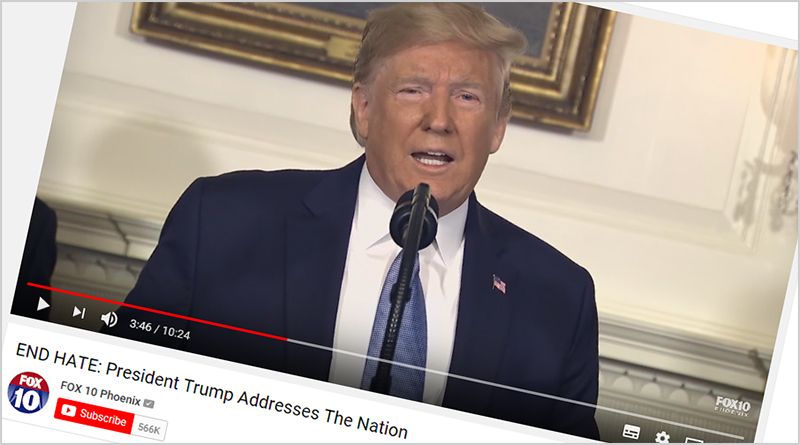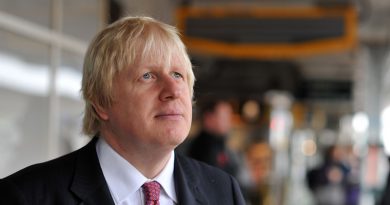US: mass shootings and deadly rhetoric?
In July 2014, after six people were killed and fourteen were injured in a gun massacre at the University of California in Santa Barbara, the US satirical website the Onion ran a version of a short article it has unfortunately had reason to republish since with alarming frequency. Titled “’No Way To Prevent This’ Says Only Nation Where This Regularly Happens”, it went out again last Sunday ending with the closing lament:
“At press time, residents of the only economically advanced nation in the world where roughly two mass shootings have occurred every month for the past eight years were referring to themselves and their situation as “helpless.””
And so, the United States once again finds itself in the terrible aftermath of mass shootings claiming multiple lives. On July 28th a teenage gunman killed three people and wounded sixteen at a food festival in Gilroy, California whilst over the last weekend at least 32 people were killed in separate incidents in El Paso, Texas and Dayton, Ohio. According to statistics from the Gun Violence archive with the number at 252, there have been more mass shootings in the US (mass shootings defined as events where four people are shot excluding the shooter) than there have been days this year. So far in 2019 8,837 people have been killed by guns and 17, 489 injured. As Amnesty International reports, among high-income countries, the United States accounts for 80 percent of all gun deaths in the world, 86 percent of all women killed by guns, and 87 percent of all children younger than 14 who are killed by guns.
In his televised address to the nation on Monday, President Trump spoke solemnly of the country’s collective outrage at the “monstrous evil” and “barbaric slaughter”. In seeking to find a cause for the actions of the murderous individuals, the President called for an end to the glorification of violence in society and attacked the “gruesome and grisly video games that are now commonplace.” He called for the need to recognise that the internet has provided a dangerous avenue to radicalise disturbed minds and called for Congress to reform mental-health laws “to better identify mentally disturbed individuals who may commit acts of violence,” “Mental illness and hatred pulls the trigger,” he stated, “not the gun.”
Trump’s decision to highlight the perceived insidious effects of video games was entirely predictable. After the Florida school shootings of 2018 he said: “The level of violence on video games is really shaping young people’s thoughts”. The problem is that academic studies have routinely been unable to establish a clear link between real life violence and video games. That is not to say there are no effects – everything we see, hear or participate in related to the media will obviously have some effect, but leading to extremely aggressive violent or homicidal behaviour? The evidence just does not support such claims.
The most recent research into this area, using representative data from British teens and their parents alongside official E.U. and US ratings of game violence, was conducted by Oxford University and co-authored by Cardiff University’s Netta Weinstein. The study concluded that there was no relationship between aggressive behaviour in teenagers and the amount of time spent playing violent video games. As criminologist James Alan Fox told the Washington Post:
“Video games are an easy scapegoat. They don’t lose votes by blaming the video-game industry. You can lose votes blaming the gun industry, which is why some people choose not to do that.”
Trump’s comment that it was mental illness that “pulls the trigger” was grossly irresponsible. Such vagaries help no-one. What is ‘mental health’ anyway? It can reasonably argued that any perpetrator of a mass shooting is somehow mentally deficient but as US based Professor of Psychiatry Arash Javanbakht has argued, the term “mental health” covers a variety of psychiatric ailments, As he writes, there are 200 diagnoses listed in the most recent version of Diagnostic Statistical Manual of Mental Disorders, released by the American Psychiatric Association. There are conditions such as anxiety disorders, social phobia, social anxiety disorder, post-traumatic stress disorder, different forms of depression and personality disorders, such as antisocial personality. The list goes on.
The truth, posits Javanbakht, is that:
“mental illness has been scapegoated to deflect public outrage about access to assault rifles that can kill tens of people in a matter of minutes. During these heated debates, words such as “crazy,” “nuts” and “maniac” are used to describe the person who committed the act of violence, even before a medical diagnosis is released.”
But Trump also spoke of the need to resist the vile rhetoric of separatism saying, “our nation must condemn racism, bigotry and white supremacy. That has no place in America.”
These are of course welcome words from the most powerful man in the world. But they shouldn’t be used to conceal a consistent pattern of behaviour from Trump which has seen him wilfully whip up divisions in US society and regularly utilise the language of hatred and fear. As I’ve written before this is a man whose success has been partially built on the daily utilisation of insult and violent language.
In January he asked why people from “shithole” countries were allowed to enter the US Recently he tweeted that a black area of Baltimore, Maryland was a “disgusting, rat and rodent infested mess” where “no human being would want to live.” On July 14th he tweeted that four Democrat women politicians of colour should go “go back” to “the totally broken and crime infested places from which they came.” In May, at one of his messianic rallies, Trump asked the crowd, in respect of migrants, “how do we stop these people?” When someone shouted, “shoot them!” his reaction, in common with some of his audience, was to laugh.
And, as the New York Times reported this week, since January, the Trump team has posted more than 2,000 ads on Facebook that include the word “invasion” — which is, reports the Times, part of a “barrage of advertising focused on immigration, a dominant theme of his re-election messaging.”
This becomes even more important when you consider that the alleged perpetrator of the massacre in El Paso on Saturday was an anti-immigration white supremacist whose apparent manifesto was published on social media. One passage states: “This attack is a response to the Hispanic invasion of Texas. They are the instigators, not me. I am simply defending my country from cultural and ethnic replacement brought on by an invasion.”
In a statement posted on Twitter, former President Obama wrote that the American people were not helpless. They should “insist on holding public officials accountable for changing our gun laws.” He also urged his fellow citizens to:
“soundly reject language coming out of the mouths of any of our leaders that feeds a climate of fear and hatred or normalizes racist sentiments; leaders who demonize those who don’t look like us, or suggest that other people, including immigrants, threaten our way of life, or refer to other people as sub-human, or imply that America belongs to just one certain type of people.”
As satirist John Oliver put it, though Tump cannot be blamed for the existence of white nationalism and anti-immigrant hysteria he has created an environment where those kinds of views can incubate and flourish.




